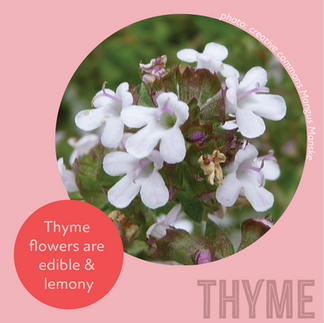CULTIVARS CURRENTLY IN THE GARDEN:
Leaf Lettuce Mix
Bibb Lettuce Heads
A sharp, minty flavor
Source: jmheatherly.medium.com

Photo by Olena Sergienko on Unsplash
Thyme originates from the eastern Mediterranean. While Ancient Egyptians embalmed their dead with it, the Greeks burned it as incense in temples for courage. It’s in the mint family with oregano.
Classic French herb combos — like Boquet Garnis and Herbes de Provence — contain thyme. So does the Mediterranean blend called Za’atar. Thyme lightens lamb’s gamey taste and pairs well with cheeses. Remove the leaves by pulling your fingers opposite the stem or with the tines of a fork.
Scientific name: Thymus vulgaris Tastes: sharp, minty, earthy, floral, sweet, peppery Uses: pairs with meat, potatoes, cheese, and beans. Tea. Folk medicine.
HISTORY
Originating in the Mediterranean, thyme may have first been cultivated in the Levant where it is still found growing wild. The Romans may be responsible for spreading it throughout Europe since they used it to purify rooms and flavor cheese and liqueurs. Thyme was used as incense, given as gifts of courage to warriors, and placed on coffins during funerals.
GROWTH & HARVEST
Grown outdoors, thyme is perennial here in zone 7. Thyme is easy to grow and needs little care other than frequent harvesting and light pruning after year 1 to keep it from growing woody and brittle.

RECIPE
Ingredients: oregano, marjoram or thyme, cumin, coriander, sesame seeds, salt, and sumac. Use Za’atar as a meat rub or to sprinkle on hummus. See link for directions. Recipe from https://www.feastingathome.com/






Comments